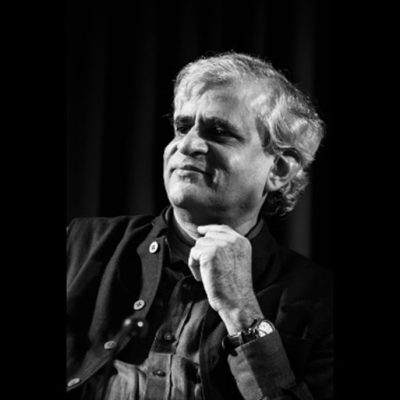2nd PUC English Question and Answer – Where There is a Wheel
Looking for 2nd PUC English textbook answers? You can download Chapter 13: Where There is a Wheel Questions and Answers PDF, Notes, and Summary here. 2nd PUC English solutions follow the Karnataka State Board Syllabus, making it easier for students to revise and score higher in exams.
Karnataka 2nd PUC English Textbook Answers—Reflections Chapter 13
Where There is a Wheel Questions and Answers, Notes, and Summary
2nd PUC English Chapter 13
Where There is a Wheel
Scroll Down to Download Where there is a Wheel PDF
Comprehension I.Where there is a Wheel
Question 1.
What does cycling as a symbol of social mobility mean?
Answer:
Cycling symbolizes freedom, independence, and mobility for rural women.
Question 2.
When Jamccla Bibi says, “It is my right. We can go anywhere,” she is
(a) asserting her right to move freely.
(b) suggesting mobility leading to liberation.
(c) expressing her indifference to dirty remarks.
(d) boasting about her cycling skills.
Answer:
(b) suggesting mobility leading to liberation.
Question 3.
What does a bicycle represent for rural women?
Answer:
For rural women, a bicycle represents independence, freedom, and mobility.
Question 4.
Who has cycling benefitted the most?
Answer:
Cycling has primarily benefitted women agricultural labourers, quarry workers, nurses, Balwadi and Anganwadi workers, school teachers, and students at schools and colleges.
Question 5.
What is common between Neo-literates and Neo-cyclists?
Answer:
Neo-literates and Neo-cyclist women are mutually dependent on each other and assist one another in cycling.
Question 6.
‘Enforced routine’ and ‘male imposed barrier’ refers to
(a) confining women to the kitchen.
(b) subjecting women to drudgery.
(c) status of women in a patriarchal society.
(d) lack of freedom of movement.
Answer:
(b) subjecting women to drudgery.
Question 7.
How did the men react to women taking to cycling?
Answer:
Men made inappropriate comments toward women who were cycling.
Question 8.
What do the phrases “flags on the handlebar” and “bells ringing” suggest?
Answer:
These phrases indicate that women cyclists celebrated International Women’s Day in 1992 by attaching flags to their handlebars and ringing bells to draw attention.
Question 9.
Why did UNICEF sanction mopeds to Arivoli women activists?
Answer:
UNICEF sanctioned fifty mopeds to Arivoli activists after being impressed by the participation of 70,000 women in public exhibitions and contests, aiming to promote awareness about cycling and literacy.
Question 10.
Why is the cycle called “the humble vehicle”?
Answer:
The cycle is referred to as “the humble vehicle” because it is affordable, requires low maintenance, serves multiple purposes, and promotes health.
Comprehension II. Where there is a Wheel
Question 1.
What is the role of Arivoli in liberating women?
Answer:
Arivoli initiated the cycling movement, led by N. Kannammal, a central coordinator. The movement aimed to boost women’s confidence and reduce dependence on men through cycling training camps. Arivoli has significantly contributed to training and organizing exhibitions for women to showcase their cycling skills.
Question 2.
What different ways does the cycle empower rural women?
Answer:
Cycling promotes development for rural women by providing them with freedom and self-sufficiency. It eliminates the need to walk long distances for water, allows easy transport of goods to markets, and enables schoolchildren to travel independently. Overall, cycling enhances women’s self-respect.
Question 3.
Why does the author describe the Arivoli “cycling training camp” as an unusual experience?
Answer:
The author finds the Arivoli “Cycling Training Camp” unusual because women, dressed in fine clothes, attended to learn cycling out of passion. They sought an escape from routine domestic tasks imposed by a patriarchal society and expressed their joy through songs while cycling.
Question 4.
Do you think women taking up cycling is as significant as the literacy movement?
Answer:
Yes, I believe that women taking up cycling is as significant as the literacy movement.
Question 5.
How does Sheela Rani Chunkath, the district collector, promote the empowerment of women?
Answer:
Sheela Rani Chunkath, a former District Collector, promoted women’s empowerment by training Arivoli literacy activists to cycle, thereby increasing their mobility. She incorporated mobility into the literacy drive and urged banks to provide loans to women for purchasing bicycles, addressing the lack of mobility that undermined their confidence.
Question 6.
How did the women react to the shortage of ladies’ cycles?
Answer:
When there was a shortage of ladies’ cycles, the women took to riding Gents cycles. Some women thought it was helpful with the bars between the seat and handlebar to seat their children.
Comprehension III. Where there is a Wheel
Question 1.
How does P. Sainath show that cycling brings about changes beyond economic gains?
Answer:
P. Sainath highlights that cycling empowers rural women by providing them with independence, freedom, and mobility. It transforms their monotonous lives, boosts their confidence, and enables them to manage marketing and sales without relying on men, allowing them to break free from male dominance.
Question 2.
“O sister, come learn cycling, move with the wheel of time…” How does the song suggest that the cycle could be an instrument of social change and progress?
Answer:
The song implies that the cycle serves as an instrument of social change by offering rural women better opportunities for a more progressive and independent life. It encourages them to embrace cycling as a means to improve their circumstances and advance in society.
Where there is a Wheel for Additional Questions and Answers
Question 1.
Sheela Rani was former?
(a) District Collector
(b) Assistant Collector
(c) Tahsildar
Answer:
(a) District Collector
Question 2.
What does a woman feel about cycling?
Answer:
Women felt that it was an Independent freedom and mobility movement.
Question 3.
Arivoli Iyakkam movement spreads
(a) culture
(b) westernization
(c) literacy
Answer:
(c) literacy
Question 4.
Whose brainchild was the cycling movement?
Answer:
Sheela Rani Chunkath.
Question 5.
What did UNICEF Sanction for Arivoli women activists do?
Answer:
Fifty mopeds.
Question 6.
What do women get from cycling?
Answer:
Cycling gives them confidence and boosts their income
Question 7.
What is the symbol of social mobility?
Answer:
Cycling is a symbol of social mobility.
Where there is a Wheel Summary

The essay “Where There Is A Wheel” from P. Sainath’s *Everybody Loves A Good Drought* explores how cycling has transformed the lives and livelihoods of rural women in Pudukottai, a small, impoverished district in India. For these women, cycling symbolizes freedom, independence, and mobility. To support this movement, bicycle training camps have been established, enabling over 70,000 women to learn cycling and participate in exhibitions.
Sainath highlights several women to illustrate the impact of cycling. Jameela Bibi, a passionate cyclist, asserts that cycling is her right and ignores rude comments from others. Fatima, a teacher who cannot afford a bicycle, rents one to enjoy her newfound freedom. In addition to Jameela and Fatima, many agricultural laborers, village health nurses, Balwadi and Anganwadi workers, school teachers, and gramsevikas have embraced cycling for their work.

N. Kannammal, a pioneer of the cycling movement and former I.A.C. officer, emphasizes that cycling has instilled confidence in women, fostering independence. She has trained women activists and advocated for banks to provide loans for purchasing bicycles. As a result, the sale of ladies’ bicycles rose by 350%, and Ram Cycles’ owner noted a growing demand, even leading to the use of men’s bicycles when needed.
Male activist Muthu Baskaran contributed to the movement by writing a cycling anthem for the women. Through cycling, rural women have increased their incomes and saved time that would have been spent waiting for buses. Upon revisiting Pudukottai, Sainath observed that the enthusiasm for cycling among women remained strong and unwavering.
